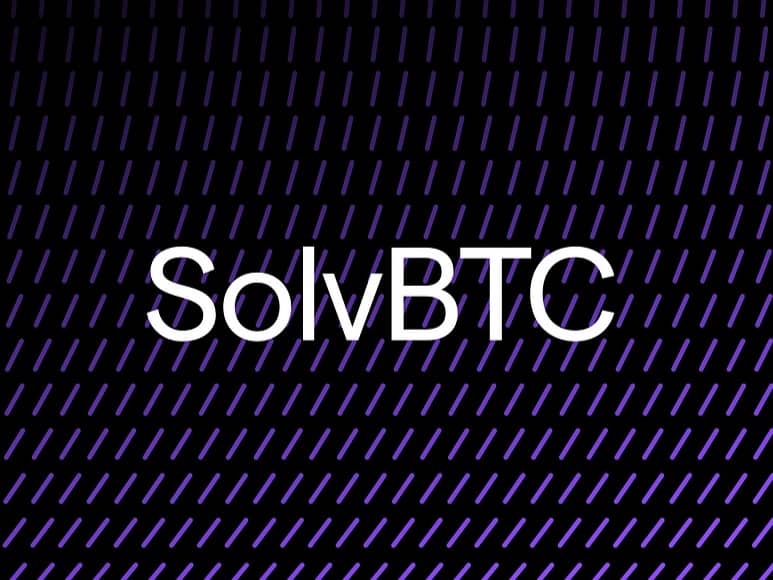Subscribe to wiki
Share wiki
Bookmark
SolvBTC
The Agent Tokenization Platform (ATP):Build autonomous agents with the Agent Development Kit (ADK)
SolvBTC
SolvBTC is a liquid staking token developed by Solv Protocol, designed to integrate Bitcoin into decentralized finance (DeFi) ecosystems. Utilizing Solv Protocol's Staking Abstraction Layer (SAL), SolvBTC aims to unlock the liquidity of Bitcoin assets and provide holders with access to yield-generating opportunities. The protocol behind SolvBTC has been audited by security firms such as Quantstamp, Certik, and SlowMist. Solv Protocol, the developer of SolvBTC, is supported by investors, including Binance Labs, Blockchain Capital, and Laser Digital. [1] [2] [3]
Overview
Despite Bitcoin's status as the largest cryptocurrency by market capitalization, a significant portion of Bitcoin assets remains underutilized in terms of yield generation compared to assets on other networks like Ethereum, which has a more developed staking infrastructure. SolvBTC was developed by Solv Protocol to address this by providing a mechanism for Bitcoin to participate more actively in DeFi through staking services and liquidity solutions for its holders. [1] [4]
SolvBTC
SolvBTC functions as a universal Bitcoin reserve token, designed to bridge the gap between idle Bitcoin and the DeFi ecosystem. It maintains a 1:1 peg with Bitcoin and can be minted by depositing native Bitcoin or various wrapped Bitcoin assets. This design allows holders to seamlessly move their assets across different blockchain ecosystems, significantly enhancing Bitcoin's utility in DeFi applications. SolvBTC provides Bitcoin holders with seamless access to cross-chain DeFi opportunities and yield generation. [5] [2]
Reserve System
To manage the underlying assets backing SolvBTC, Solv Protocol employs a tiered reserve system. This system categorizes reserve assets based on their security and liquidity characteristics:
- Core Reserve Assets: These assets form the most secure and liquid foundation of the SolvBTC reserve. Examples include native Bitcoin (BTC), Binance’s wrapped Bitcoin (BTCB), and Base’s wrapped Bitcoin (cbBTC). These assets are chosen for their stability and high liquidity, providing a strong backing for SolvBTC holdings.
- Isolated Reserve Assets: This category includes assets like WBTC, BTC.b (Avalanche), and M-BTC (Merlin). These assets may carry higher risks, such as potential de-pegging or liquidity constraints specific to their native ecosystems. Solv Protocol uses a tiered approach and a Proof-of-Reserve system to ensure transparency and limit exposure to these assets.
This tiered system aims to provide users with confidence in the backing of their SolvBTC holdings while managing the risks associated with diverse wrapped Bitcoin assets. [5]
Cross-Chain Functionality
A key feature of SolvBTC is its ability to operate across multiple blockchain ecosystems, including Ethereum, BNB Chain, Avalanche, Arbitrum, Base, BOB, Mantle, Merlin, and others. This cross-chain capability is facilitated through partnerships with interoperability protocols such as Chainlink’s Cross-Chain Interoperability Protocol (CCIP) and Free.tech. These integrations enable secure and efficient transfers of SolvBTC tokens between chains, ensuring smooth liquidity flow and minimizing transaction costs and delays for users participating in DeFi across different platforms. [5]
Staking Abstraction Layer (SAL)
The Staking Abstraction Layer (SAL) is a core component of Solv Protocol's infrastructure that enables Bitcoin staking through SolvBTC. SAL provides a unified standard for Bitcoin staking, allowing SolvBTC holders to access and earn yields from a variety of staking products and strategies. It standardizes and enhances interoperability within the Bitcoin staking ecosystem, making it more accessible for participants. SAL supports diverse Bitcoin-based staking assets, such as xSolvBTC, SolvBTC.ENA, and SolvBTC.Core, each representing different yield strategies or integrations with specific blockchain networks. [4] [2]
Yield Opportunities
Through the SAL and its integrations, SolvBTC holders gain access to several yield sources:
- Restaking: SolvBTC can be used to contribute to the security of Proof of Stake (PoS) networks, earning rewards.
- Validator Rewards: Participation in operating validator nodes can generate rewards in native tokens.
- DeFi Yields: SolvBTC and its liquid staking derivatives (LSTs) can be utilized in various decentralized finance protocols for lending, liquidity provision, and other yield-generating activities.
SolvBTC provides a structured pathway for Bitcoin holders to engage with decentralized finance and earn yields while maintaining liquidity and exposure to Bitcoin's value. [5] [2]
See something wrong?
The Agent Tokenization Platform (ATP):Build autonomous agents with the Agent Development Kit (ADK)
